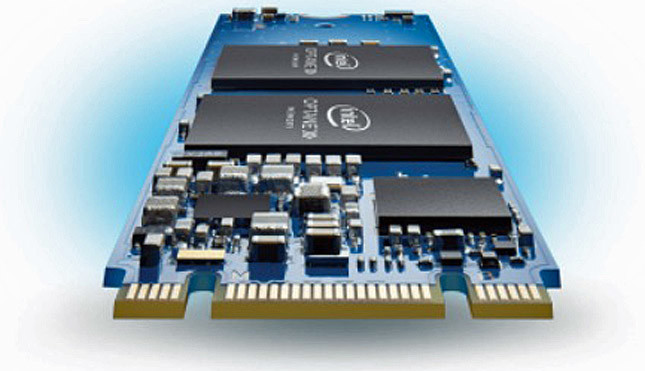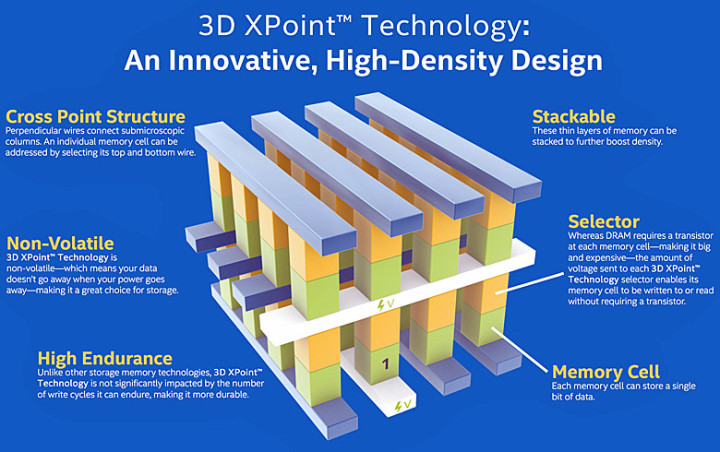3D Xpoint, Intel's Optane is the fastest SSD
April 28, 2017
on
on

About two years ago the technology was first announced and now as the result of an ongoing collaboration between Intel and Micron Technology this new breed of memory device based on 3D Xpoint technology is finally available. The first of these new Intel memory products called Optane offering high-speed, low-cost (eventually), non-volatile memory are on the shelves.
It seems as though the days of the SSDs based on Flash memory seem numbered before they were able to fully establish as the dominant technology for non-volatile memory, a case of the better being the enemy of the good. According to some preliminary tests at Tom’s Hardware the Optane model from Intel based on 3D-Xpoint technology proved to be blindingly fast and will undoubtedly lead to faster and more powerful PCs in the future but without the need for excessive power.
 3D-Xpoint memory structure, Source: Intel Corp
3D-Xpoint memory structure, Source: Intel Corp
Although when the technology was first announced two years ago a factor of 1000 speed increase was promised over competing technologies at the time (that would have been nice) but over a half a million transactions per second for this device is also not too shabby, and the Optane drive offers much better endurance. It offers up to 30 DWPD (Drive Writes Per Day) in comparison with 2 DWPD of a standard SSD. A 375 GB Optane drive will set you back $1,500. Promised for next month are consumer-grade drives which will have smaller capacity and will be cheaper. The question now is whether they will offer much of an advantage to microcontroller-based systems. Low speed 8-bit controllers will not be able to take advantage of them but faster ARM-based SoCs will most definitely benefit. It’s quite interesting to see Intel adding memory chips to their product range.
It seems as though the days of the SSDs based on Flash memory seem numbered before they were able to fully establish as the dominant technology for non-volatile memory, a case of the better being the enemy of the good. According to some preliminary tests at Tom’s Hardware the Optane model from Intel based on 3D-Xpoint technology proved to be blindingly fast and will undoubtedly lead to faster and more powerful PCs in the future but without the need for excessive power.
 3D-Xpoint memory structure, Source: Intel Corp
3D-Xpoint memory structure, Source: Intel CorpAlthough when the technology was first announced two years ago a factor of 1000 speed increase was promised over competing technologies at the time (that would have been nice) but over a half a million transactions per second for this device is also not too shabby, and the Optane drive offers much better endurance. It offers up to 30 DWPD (Drive Writes Per Day) in comparison with 2 DWPD of a standard SSD. A 375 GB Optane drive will set you back $1,500. Promised for next month are consumer-grade drives which will have smaller capacity and will be cheaper. The question now is whether they will offer much of an advantage to microcontroller-based systems. Low speed 8-bit controllers will not be able to take advantage of them but faster ARM-based SoCs will most definitely benefit. It’s quite interesting to see Intel adding memory chips to their product range.
Read full article
Hide full article


Discussion (1 comment)